Accessible Yoga: 3 Tree Pose Variations for Every Body
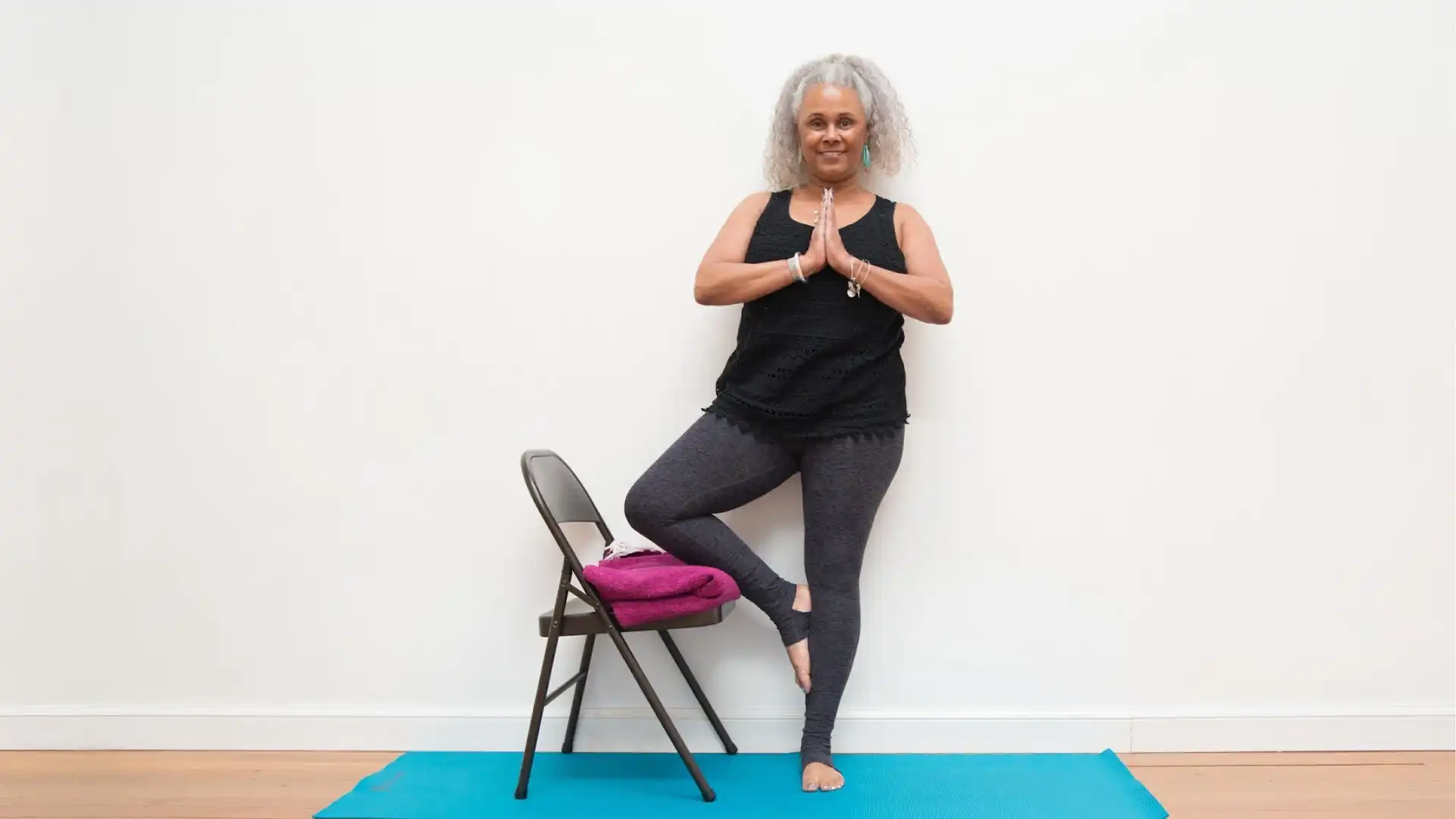
I recently wrote about my friend and colleague Jivana Heyman and the incredible work he is doing with his organization Accessible Yoga. Some of the things that I really appreciate about his work are the yoga pose variations he has come up with to meet his students where they are and to make the yoga practice accessible to all. As a way of introducing his special perspective, I asked Jivana to share some of his Vrksasana (Tree Pose) variations with us, and he kindly agreed. But before we get to that, I wanted to ask Jivana to describe the process by which these creative options came to be. Here’s what he said:
“Most of the pose variations I use actually come from my students and teachers who attend my Accessible Yoga trainings. In the trainings, I challenge them to explore new ways to practice. First, we look at the benefits of a group of poses—why we practice them. Then we find ways to offer those same benefits in adapted forms for people of all abilities to experience yoga. I usually give the teachers a challenge, such as, ‘show me how you would do a Sun Salutation lying in a bed.’ I’ve probably led this program over forty times, and in each training someone comes up with variations of poses that I had never thought of!”
I love the fact that these variations actually came from his students’ experimentation. I often witness this happening in my classes when a student is finding that the pose variation I offered is not working for them and decides to try something a bit different to make the pose more approachable.
Now here are Jivana’s top three favorite “accessible” yoga Tree Pose variations, with his descriptions about why they are beneficial. Jivana concludes with some general advice about practicing these types of variations.
—Baxter Bell
Yoga tree Pose Variations: at the Wall with a Chair
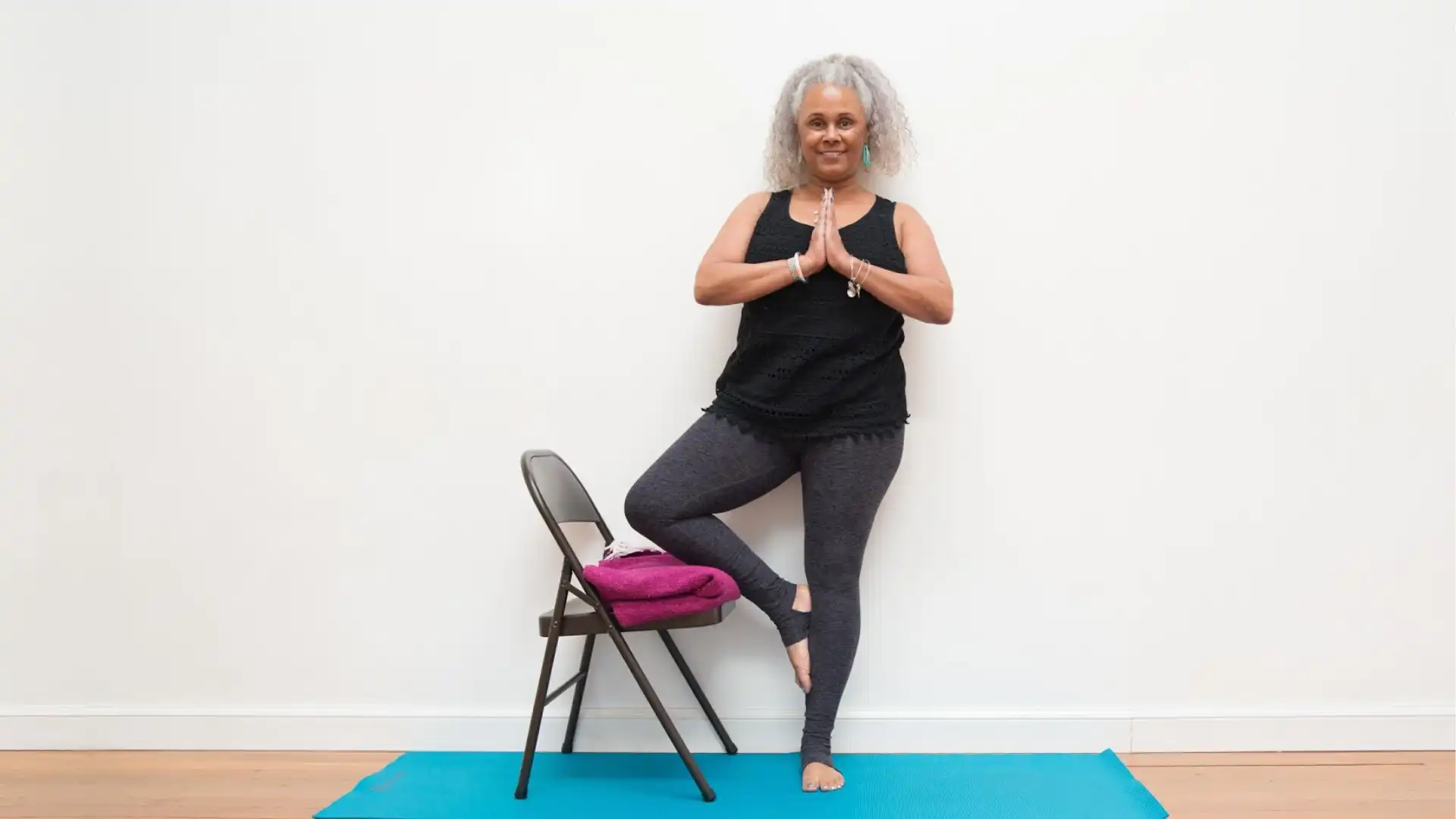
This variation is very helpful for people who struggle with balance. In general, the wall is a great prop for Tree Pose. Students can stand with their backs against the wall or just an inch away from the wall. Then they can lean back against the wall if they feel unsteady, or move slightly away from the wall to balance on their own as they feel more balanced.
The chair can offer additional help with balance and support for the raised leg, so it’s especially helpful for someone with weakness in the legs.
I encourage everyone who is practicing Tree Pose to focus on building strength in the standing leg. Softening the knee and engaging the muscles of the standing leg helps to build strength. Practicing with the hands in prayer position, rather than overhead, can help students focus on balance or, if more support is needed, it can be helpful to bring the arms down alongside the body and place the hands flat on the wall for support.
Yoga tree Pose Variations: Seated version
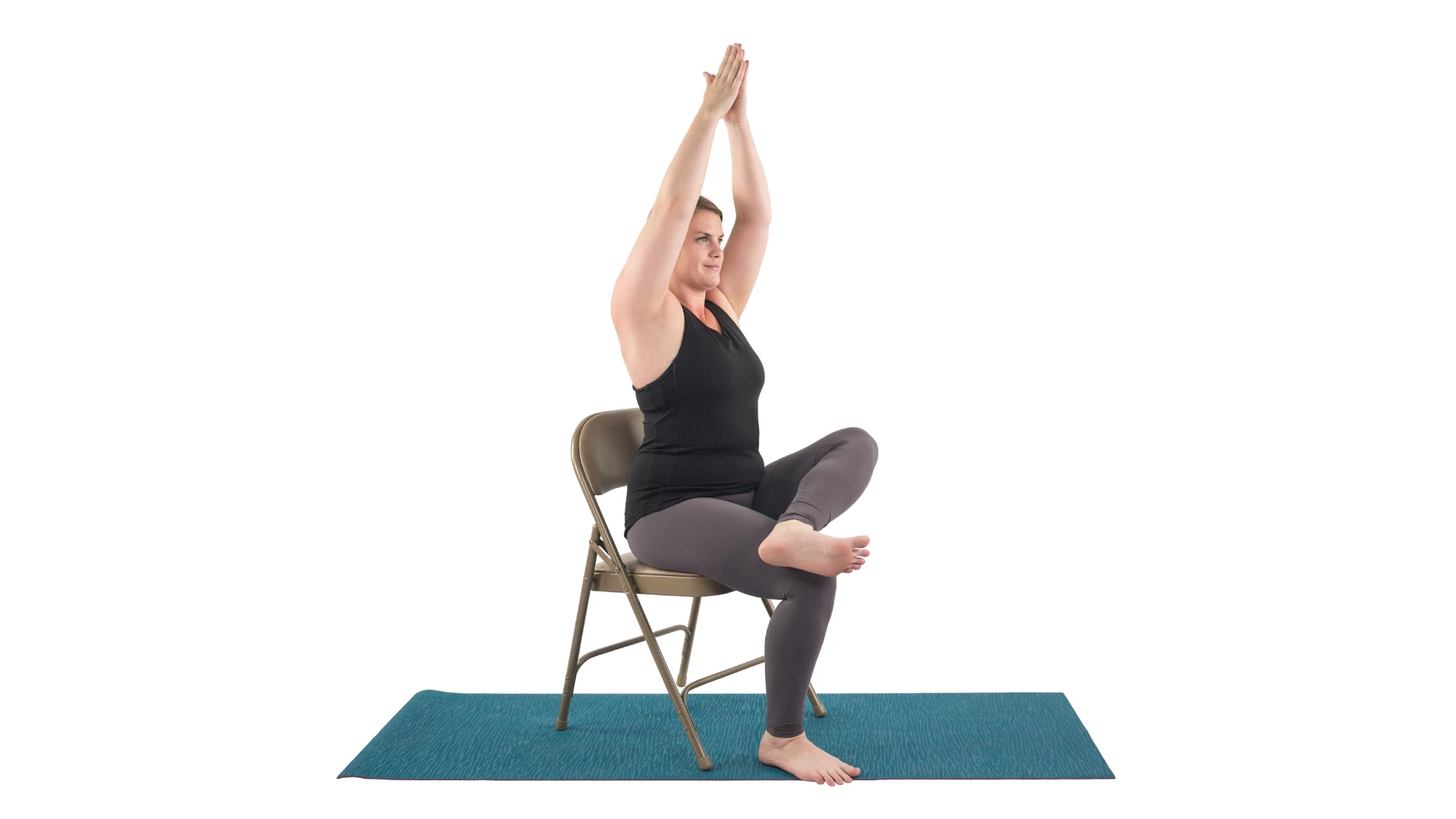
Practicing Tree Pose while seated in a chair is a great variation for anyone who is having difficulty with balance or is unable to stand. By practicing in a chair the element of balance is removed, and the other aspects of the pose can be explored more deeply. The dynamic tension between grounding and lifting that is the hallmark of the pose can be clearly felt, with the added grounding in the sitting bones. It’s even possible to engage the muscles of the supporting leg as an isometric exercise by pressing the foot into the floor.
In the variation pictured left, there is also a deep hip opening. If this is too intense, the bent leg can be opened to the side with the foot resting on a block on the floor rather than on the opposite knee. For example, if your right leg is the supporting leg, place the block on the floor just to the outside of the left front leg of the chair. With your left knee bent, abduct the left leg (open it out to the side) and place the toes of your left foot on the block (see group photo below).
You can also practice Seated Tree Pose by sitting on the floor facing a wall with one leg extended and that foot pressing into a block against the wall.
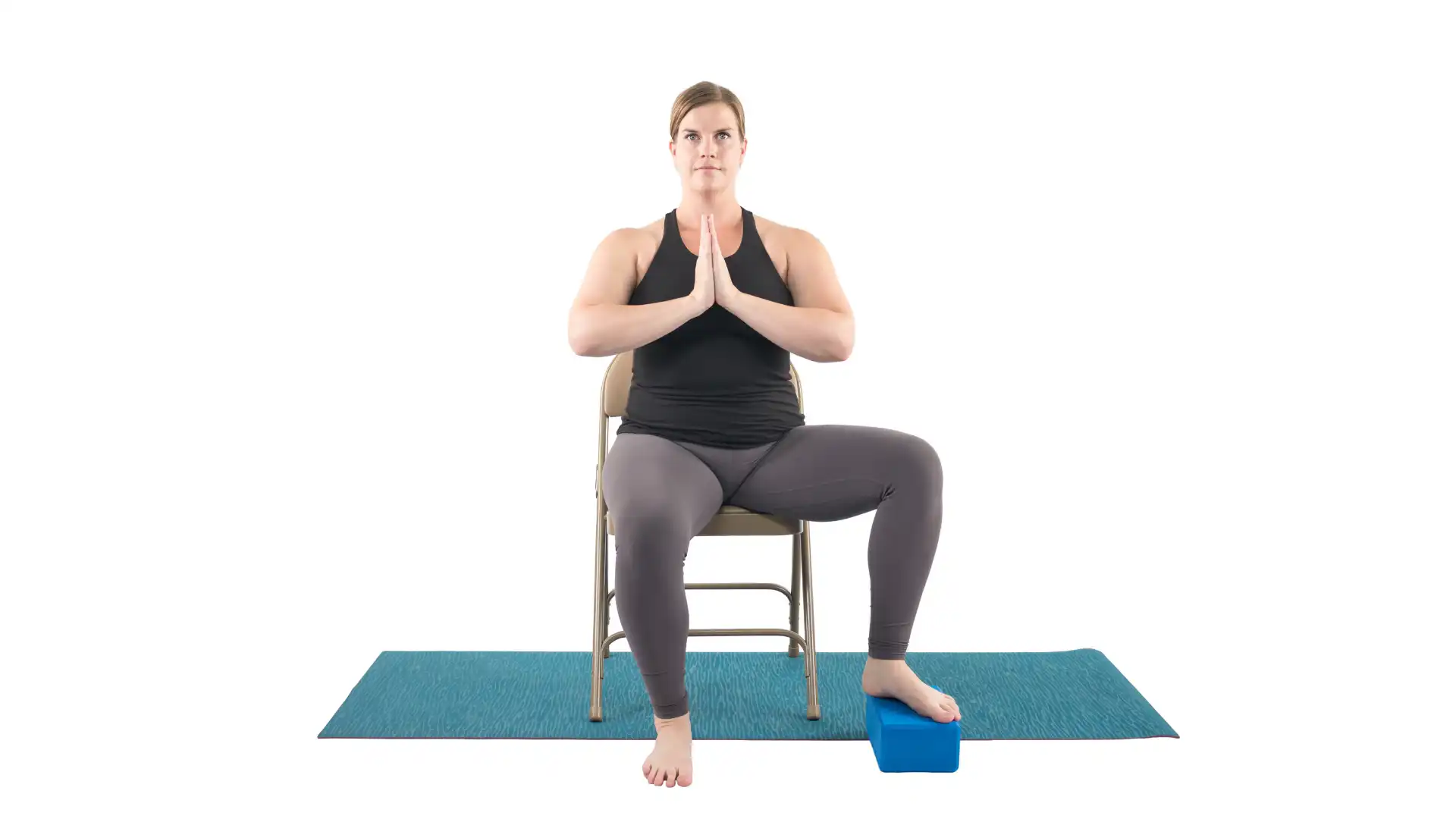
Tree Pose Variations: Log Pose or Fallen Tree Pose
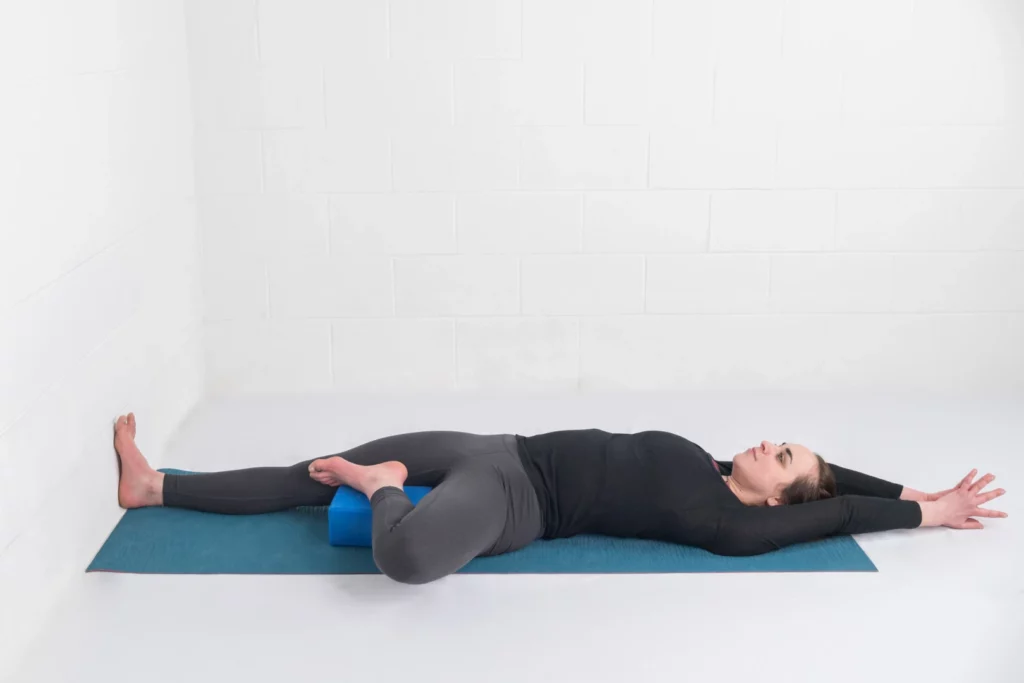
One of my favorite ways to practice and teach Tree Pose is supine. Once again, the element of balance is removed so that students can explore the other dynamics of the pose a little more deeply. In particular, I find grounding through the foot to be powerful in this variation. This grounding experience is especially helpful for someone who needs to stay in bed for an extended period of time or is unable to stand. The foot can be actively pressed into a block against the wall (or the footboard of a bed) as if it were the floor.
Also, in this position, the effect of gravity on the body is quite different from standing. Here, gravity assists in the opening of the shoulders and the hip of the bent leg. In fact, I would suggest placing a blanket or block under the bent leg to help keep the hips level and reduce the stretch in that hip.
I realize that many yoga students don’t feel confident enough in their personal practice to explore these types of variations on their own, but as teachers, I think we should be encouraging it. In general, my goal is to launch students into their own personal practice where they no longer need the constant supervision of a teacher.
Of course, yoga practitioners need to be aware of their alignment, which I define as practicing safely. But bringing creativity into yoga practice can add so much! It can offer us the opportunity to practice when we are tired or injured, and it can offer us the ability to explore our bodies and what they really need in that moment. This creativity can also connect us back to the essential purpose of yoga, which is to calm the body and mind and connect with a deeper peace.
Learn more about Accessible Yoga from YogaUOnline writer Christine Malossi – The Accessible Yoga Revolution: Yoga For Everybody.
Reprinted with permission from Yoga for Healthy Aging Blog
Top Photo courtesy of Sarit Z Rogers of Sarit Photography
 Jivana Heyman, C-IAYT, eRYT500, is the founder of Accessible Yoga, an international non-profit organization dedicated to increasing access to yoga teachings. Accessible Yoga offers conferences, trainings, an Ambassador program, and an online network dedicated to sharing yoga with everybody.
Jivana Heyman, C-IAYT, eRYT500, is the founder of Accessible Yoga, an international non-profit organization dedicated to increasing access to yoga teachings. Accessible Yoga offers conferences, trainings, an Ambassador program, and an online network dedicated to sharing yoga with everybody.
For over twenty-five years, Jivana has specialized in teaching yoga to people with disabilities with an emphasis on sharing yoga philosophy. His passion is making yoga accessible to everyone. Jivana has led more than fifty yoga teacher training programs around the world. In December 2015, Jivana was invited to teach Accessible Yoga at the United Nations in Geneva, and he continues to work toward expanding access to the teachings of yoga. For more information and upcoming Conferences and Trainings visit www.accessibleyoga.org
 Baxter Bell, MD, C-IAYT, eRYT 500, is a yoga teacher and educator, physician, and medical acupuncturist. These days, he focuses on teaching yoga full-time, both to ordinary students of all ages and physical conditions and to the next generation of yoga teachers, to whom he teaches anatomy and yoga therapy, along with his accessible, skillful style of yoga. Baxter brings a unique perspective to his teaching, combining his understanding of anatomy and medicine with his skill at instructing people from all walks of life and all levels of ability. Baxter is the co-founder and writer for the popular Yoga for Healthy Aging blog, where he shares his knowledge of medical conditions, anatomy, and yoga with practitioners and teachers across the world. In addition to being a frequent presenter at Yoga Journal Alive events and yoga conferences such as IAYT’s SYTAR, he is often quoted as an expert on yoga and health by major national news outlets such as The Washington Post and Wall Street Journal. To learn more, visit www.baxterbell.com, www.yogaforhealthyaging.blogspot.com, and his YouTube channel, Baxter Bell Yoga. Baxter is the co-author with Nina Zolotow of Yoga for Healthy Aging: A Guide to Lifelong Well-Being.
Baxter Bell, MD, C-IAYT, eRYT 500, is a yoga teacher and educator, physician, and medical acupuncturist. These days, he focuses on teaching yoga full-time, both to ordinary students of all ages and physical conditions and to the next generation of yoga teachers, to whom he teaches anatomy and yoga therapy, along with his accessible, skillful style of yoga. Baxter brings a unique perspective to his teaching, combining his understanding of anatomy and medicine with his skill at instructing people from all walks of life and all levels of ability. Baxter is the co-founder and writer for the popular Yoga for Healthy Aging blog, where he shares his knowledge of medical conditions, anatomy, and yoga with practitioners and teachers across the world. In addition to being a frequent presenter at Yoga Journal Alive events and yoga conferences such as IAYT’s SYTAR, he is often quoted as an expert on yoga and health by major national news outlets such as The Washington Post and Wall Street Journal. To learn more, visit www.baxterbell.com, www.yogaforhealthyaging.blogspot.com, and his YouTube channel, Baxter Bell Yoga. Baxter is the co-author with Nina Zolotow of Yoga for Healthy Aging: A Guide to Lifelong Well-Being.



